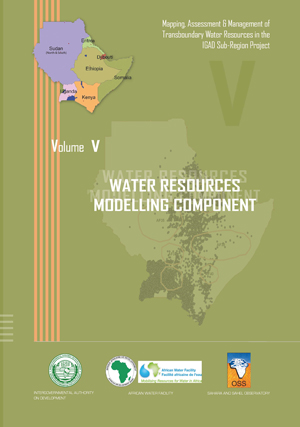Author: OSS
Published in: 2011
Project:
Theme: Water resources management
Type: Studies and reports
ISBN: 978-9973-856-68-5
Country:
Mapping, Assessment & Management of Transboundary Water Resources in the IGAD Sub-Region Project : Water resources modelling/Hydrology component - Vol. V
The Water Resources Modelling section conceptualized and developed of a hydrologic model for water resources assessment of the identified transboundary basins in the IGAD region. Despite the lack of data (meteorological data, daily stream flows, etc.) which limited the effective calibration of the model, several attempts were carried out to ensure effective estimation of the Water resources for the IGAD basins.
The evaluation of the hydrological performance of the SWAT model on a daily/monthly time resolution for the IGAD basins faced large deficiencies in the database, especially regarding daily observations - a number of observations are missing. Model calibration requires the availability of reliable flow data for major rivers within the basins in both temporal and spatial terms. These data were not available for the current study. Consequently, the study used the available data from other sources which are sparse and not free of errors. Furthermore, the model helped clearer understanding of the hydrological response of several IGAD catchments and the potential use. A simple sensitivity study helped reduce the dimensionality of the calibration challenge.
The Water Resources Modelling of the Six (6) identified transboundary river basins (Danakil, Gash-Baraka, Turkana-Omo, Ayesha, Juba-Shebelle and Ogaden) represent a first attempt to comprehensively model their water resources within the IGAD sub-region.
For most of the basins, the estimated available annual water resources were in good agreement with results from other studies. As such the estimates for all basins need further investigations before they can be used as a basis for comprehensive decisions about the basins. There is need for collection of additional data from the member countries as soon as a mechanism for data sharing can be implemented.
The model assessed the available water resources for the IGAD transboundary basins to 182.8 km3 (111.3 km3 for Surface water and 71.5 km3 for Groundwater). Additional data especially daily stream flows at several locations in the basin, are required to improve the water resources simulations.
